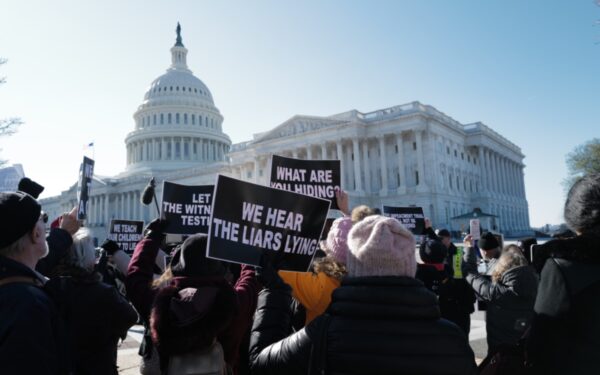President Donald Trump’s “skinny budget” is a striking read for a Brit imbued in the UK debate about “austerity”. The intent, according to his Office of Management and Budget, is to turn the President’s speeches, policies and ideas “from words to numbers”. For all the wailing and gnashing of teeth about the effects of Conservative budgets on UK departments, Trump’s would cut spending from some more in a year than those vicious Tories will over a decade.
The numbers speak for themselves. Department for Agriculture spending down 20.7 percent between 2017 and 2018. Energy down 5.6 percent. Housing and Urban Development down 13.2 percent. Labor down 20.7 percent. The Environmental Protection Agency down 31.4 percent. And it’s not just arbitrary totals for departments to hit. The document identifies a raft of whole programs to be jettisoned (most long identified by libertarian and conservative groups as worthy of the chopping block). This is more comprehensive than a UK government comprehensive spending review. Everything from the Economic Development Administration right through to the McGovern-Dole Food for Education Program are listed for abolition, with more to follow as the full budget is developed.
In many ways this is refreshingly honest. Trump ran a campaign on boosting military and homeland security spending. When the U.S. already spends more on defence than the next 8 national combined, it’s unclear to me why this is necessary. But given that choice, he has decided to fully offset the $59.5 billion expansion across 3 agencies (including a 10 percent defence increase) with $64.4 billion in cuts across 17. President George W. Bush had no qualms about racking up extra military spending by borrowing. Trump is making clear to taxpayers and voters that elections and spending decisions involve trade-offs.
Of course, that is not to say that Trump will prove to be a fiscal conservative overall. This budget excludes his plans for infrastructure and the “mandatory” expenditures of Social Security and Medicaid – which are completely unsustainable given long-term demographics. It also says nothing on tax, and we know Trump wants significant tax cuts. Yet showing that spending pledges need to be funded or offset now will at least be the starting point when other new policies are announced.
The key thing though is that Trump is clearly prioritizing the traditional functions of the federal government (not least security) and hacking back on most areas where government has grown through the 20th century. Time after time, the budget highlights the wastefulness of federal government programs and talks about how state and local governments are better placed to make decisions themselves. This theme of fiscal federalism runs through much of the document, with schemes such as the Community Development Block Grant, which doles out money to cities to build things such as car parks, a good example of where Trump wants to slash federal aid.
Of course, all these programs will have Republican congressional cheerleaders. What the budget will ultimately look like when it gets through Congress is anyone’s guess. What’s clear though is that this budget, taken alongside Trump’s musings and executive orders on regulation, freezing federal hiring and downsizing government, shows that he is serious about scaling back the scope of the federal government. His advisor Steve Bannon said he wanted to deconstruct the administrative state. This budget begins to do just that.
Ryan Bourne works at the Cato Institute, where he is the R. Evan Scharf chair in the Public Understanding of Economics.



